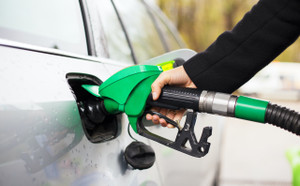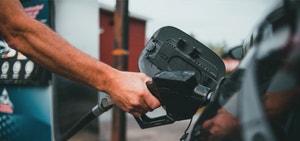10 eco-driving tips that can help you save money and reduce your carbon footprint
By Kijiji Autos
Kaspars Grinvalds - stock.adobe.com
Feeling a little sticker shock at the gas pumps these days? You're not alone. With rising gas prices, carbon taxes on fuel and concerns about climate change, many Canadians are wondering how to save gas when driving. One way to potentially save on fuel is to make the switch to an electric or hybrid vehicle. But if you're not ready to trade in your car, experts recommend adopting eco-driving techniques that can help you save money and fuel.
Here are 10 simple ways to reduce your fuel consumption and environmental impact:
1. Drive smoothly
Rapid acceleration and hard braking can increase your fuel consumption by up to 39%. To save gas, try to accelerate gently and maintain a reasonable speed rather than weaving through traffic. Experts say that to be as fuel-efficient as possible, you should take about five seconds to accelerate to 20 km/hr.
2. Stick to the speed limit
While you may think getting somewhere faster will save you gas, most cars actually reach peak fuel efficiency between 50 to 80 km/hr. As you increase your speed over that point, your fuel consumption also increases. Driving 120 km/hr uses 20% more fuel than driving 100 km/hr. To help you maintain a steady speed, try using cruise control when highway driving.
3. Keep your distance
One suggestion for how to save fuel is to keep your distance from other cars. When you have plenty of room, you can anticipate traffic and pedestrian movements and adjust your speed accordingly rather than having to slam on the brakes. You can also save gas by coasting to a stop rather than braking.
4. Avoid idling
It can be tempting to leave your engine running, especially on cold winter days, but idling is bad for fuel economy and for the environment. An average car uses 0.3 litres of gas for every 10 minutes of idling. Try to turn off your engine when stopped for more than 60 seconds.
5. Check your tire pressure
A simple way of saving fuel is to make sure your tires are properly inflated. Under-inflated tires can reduce your car's fuel efficiency by up to 4%. It's a great idea to check your tire pressure monthly for safety and to save on gas.
6. Be smart about climate control
While air conditioning can be a lifesaver during a heatwave, it can also increase your fuel consumption by up to 20%. On milder summer days, try driving with the windows down rather than turning on the air, unless you're on the highway where open windows create drag and boost fuel consumption.
7. Reduce excess weight and drag
One suggestion on how to improve fuel economy is to remove any extra cargo or accessories between uses. Bicycle racks and rooftop cargo boxes increase drag even when empty and can increase fuel consumption by up to 20%.
8. Keep your car well-maintained
Sticking to a regular maintenance schedule can help ensure your car is as fuel-efficient as possible. Unresolved engine issues could increase your fuel consumption by up to 40%. Plus, fresh oil and clean air filters help your car run more efficiently.
9. Combine trips
A warm engine is more efficient than a cold one, so try to combine trips instead of making multiple outings. One suggestion on how to save money on gas is to run errands along your commute rather than going out again in the evening or on the weekend.
10. Track your fuel consumption
A good first step in reducing your fuel consumption is tracking it. Track how often you fill up and keep an eye on your car's fuel consumption display. By changing your driving habits, you could be able to reduce the frequency of your fill-ups.
Ready to trade-up to an eco-friendlier vehicle? Kijiji Autos offers a huge selection of fuel-efficient compact cars plus hybrid and electric vehicles for sale in your neighbourhood and across Canada.
Easily find your next ride on Kijiji Autos
Search nowCosts of Installing an Electric Car (EV) Charging Station in Canada
Installing a home EV charger can come with additional fees beyond purchase and installation. Here's a list of factors that can affect the price of a home EV charger.Toronto to Calgary Road Trip: Routes & Tips
Planning on driving from Toronto to Calgary? Here are some routes and tips to help you along the way.7 items you can fit in an SUV: TVs, mattresses and more
Discover seven common items that fit in an SUV below.Flat Tire vs Blowout: What's the Difference & What Should You Do?
The main difference between a flat tire and a blowout is that a blowout often feels like an explosion has occurred underneath your vehicle. Blowouts can cause sudden and drastic changes to the handling of your vehicle and can lead to minor or even serious accidents.Tips to help protect your vehicle and budget for car repairs
When shopping for your next vehicle, it's always a good idea to keep hidden costs in mind. Before you buy, let's look at how much it can cost to maintain a car in Canada, how much you could budget for annual maintenance and repairs, and how to help protect your car against damage and depreciationWhat is the value of undercoat protection on your vehicle?
When you buy a new vehicle, protecting it so that it lasts as long as possible is definitely top of mind, whether that's through security upgrades or an extra coat of paint. But how often do you consider the care and safety of your vehicle’s undercarriage?The top three best paint protection options for your vehicle
Buying a new vehicle is a great experience. Nothing beats hitting the road in a car you bought fresh off the lot. However, as fun as it is to finally get behind the wheel of your new ride, it's important to take your time through the process.Financial guide: post-pandemic car shopping and gas price hacks
With populations locked down and international borders closed the global supply chain has been disrupted on a massive scale, pushing up inflation around the world and raising the cost of everything that people need to get back to normal. Here are a few tips you can use to grab the vehicle you want without breaking the bank.10 tips to help make the road a better and happier place
We have all, at some point, been responsible for making the roadways stressful in one way or another. Alternatively, we are all equally capable of making the road a happier place. Let’s explore 10 unique ways we can help make the driving experience better again, for everyone's sake.10 great road trips in Canada
Living in one of the biggest countries in the world, it's pretty common to hear the open road calling. From the Rocky Mountains to the Gentle Island, the Great Lakes to the Badlands, grab your favourite gas station snacks, press play on your driving playlist and hit the road.








